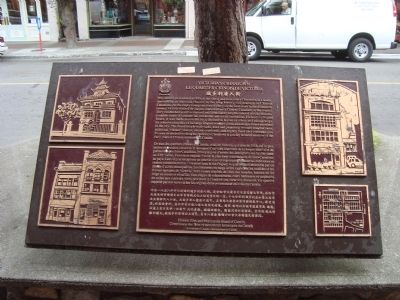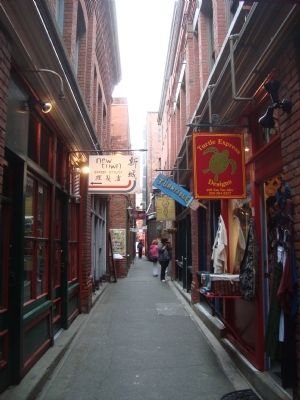Victoria's Chinatown National Historic Site
Victoria's Chinatown was designated a national historic site in 1995.
Commemorative plaque: Fisgard Street near Fan Tan Alley Pandora, Fisgard, Victoria, British ColumbiaFootnote 1
Victoria's Chinatown
The oldest and most intact Chinatown in Canada, this district represents an important chapter in the complex history and heritage of Chinese Canadians. As the major immigrant port of entry on the west coast before World War I, Victoria boasted the largest concentration of Chinese Canadians in the country. They established a self-contained and identifiable neighbourhood which offered a complete range of commercial, residential and social amenities. Focused on Fisgard Street, it was made accessible by a distinctive layout of alleys and passageways. Its cohesive groupings of buildings adapted standard forms and designs found elsewhere in the city. Their flared temple-styled roofs, inset and projecting wrought-iron balconies, additional "cheater" storeys, interior courtyards, and brightly hued tiled overhangs give the area its distinctive character. Victoria's Chinatown is a richly textured reminder of the early years of Chinese settlement in Canada.
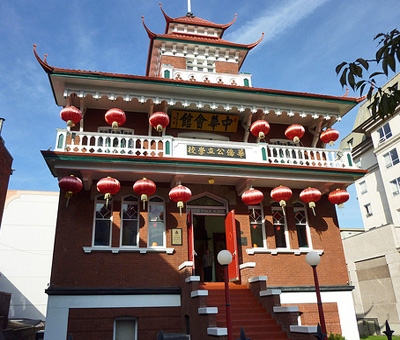
© Parks Canada/Andrew Waldron, 2011
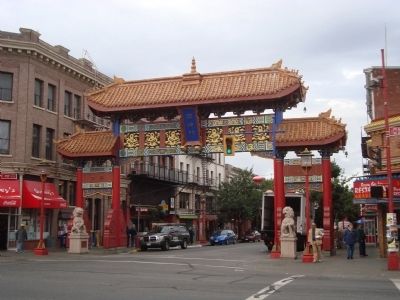
© Photographed by Barry Swackhamer, September 15, 2011, taken from www.hmdb.org/
Description of historic place
Victoria’s Chinatown is an identifiable neighbourhood of tightly built primarily two and three-storey mixed-use brick buildings in a three-block area of downtown Victoria, British Columbia. Focussed on Fisgard Street, its interior is accessed by a distinctive layout of alleys and passageways. The cohesive grouping of buildings adapts standard forms found elsewhere in the city, decorated with flared temple-style roofs, inset and projecting wrought-iron balconies, interior courtyards and brightly hued tiled overhangs. A ceremonial entry arch was erected as part of a 1980s revitalization program. The official recognition refers to two nodes comprising some 33 buildings and the open spaces between them.
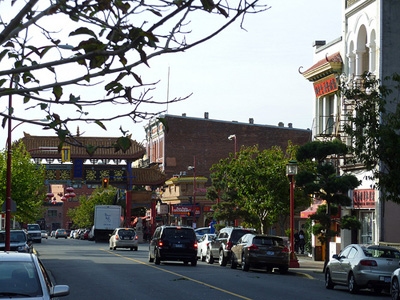
© Parks Canada/Andrew Waldron, 2011
Heritage value
Victoria’s Chinatown was designated a national historic site of Canada because:
- it is the oldest surviving Chinatown in Canada;
- it was the largest urban centre of Chinese population in Canada through the first decade of the twentieth century;
- it is one of a very few Chinatowns in North America to retain cohesive groupings of high heritage value and is dominated by its historical buildings.
The heritage value of this site is embodied in the diverse collection of structures within the district, their spatial connections, and ongoing role in commercial, social and institutional activities of the Chinese Canadian community. It speaks to the fact that, for nearly three decades before the Canadian Pacific Railway was completed, Victoria was the first port of entry of most Chinese immigrants and remained an important enclave until after World War II.
Source: Historic Sites and Monuments Board of Canada, Minutes, November 1995.
The National Program of Historical Commemoration relies on the participation of Canadians in the identification of places, events and persons of national historic significance. Any member of the public can nominate a topic for consideration by the Historic Sites and Monuments Board of Canada.
- Date modified :
